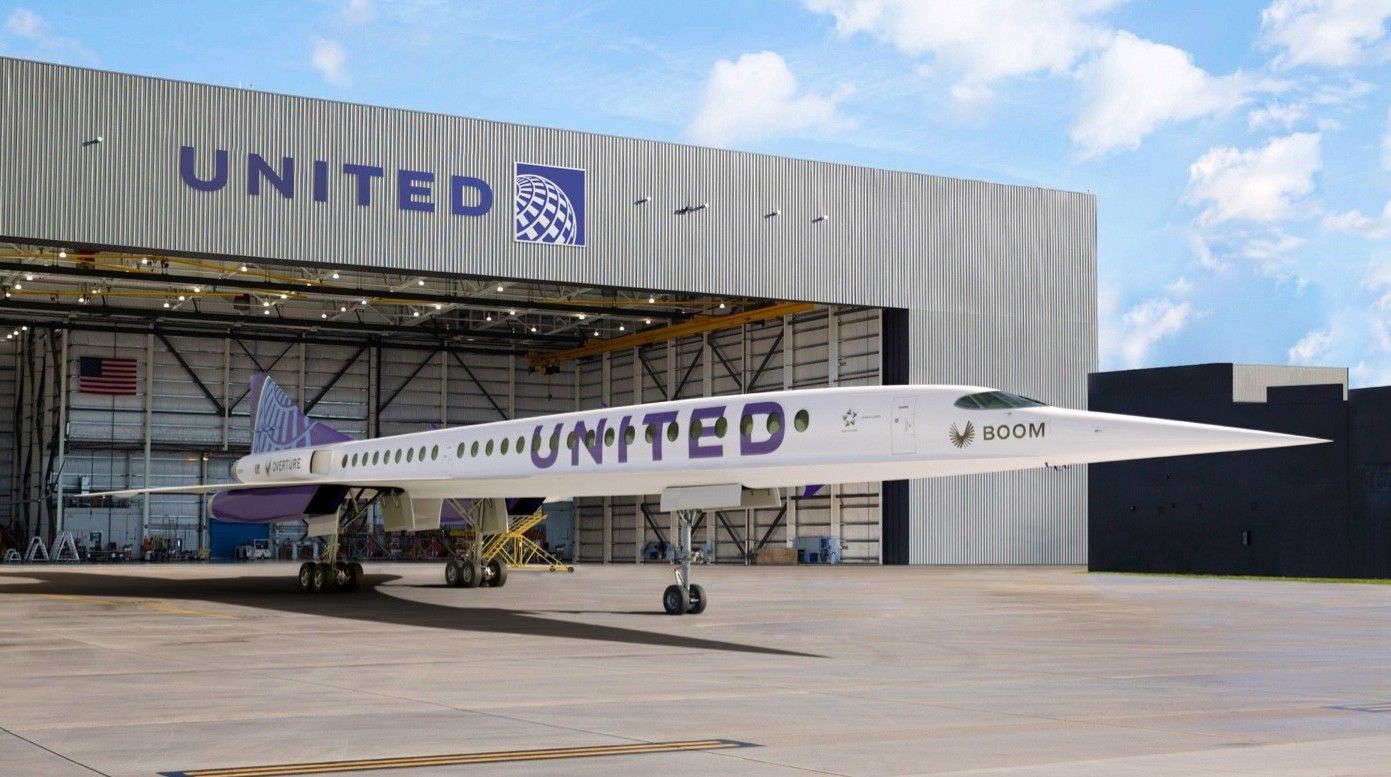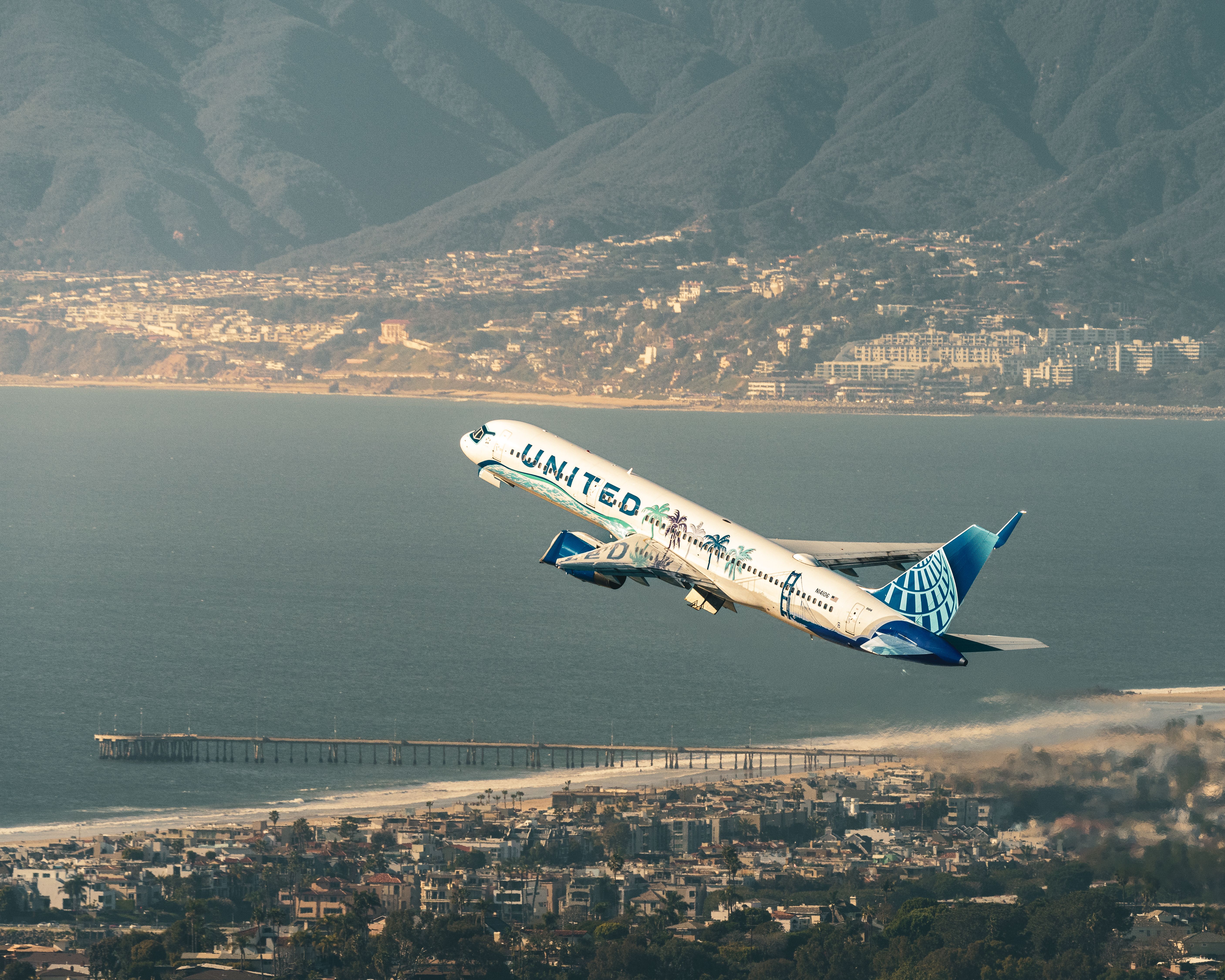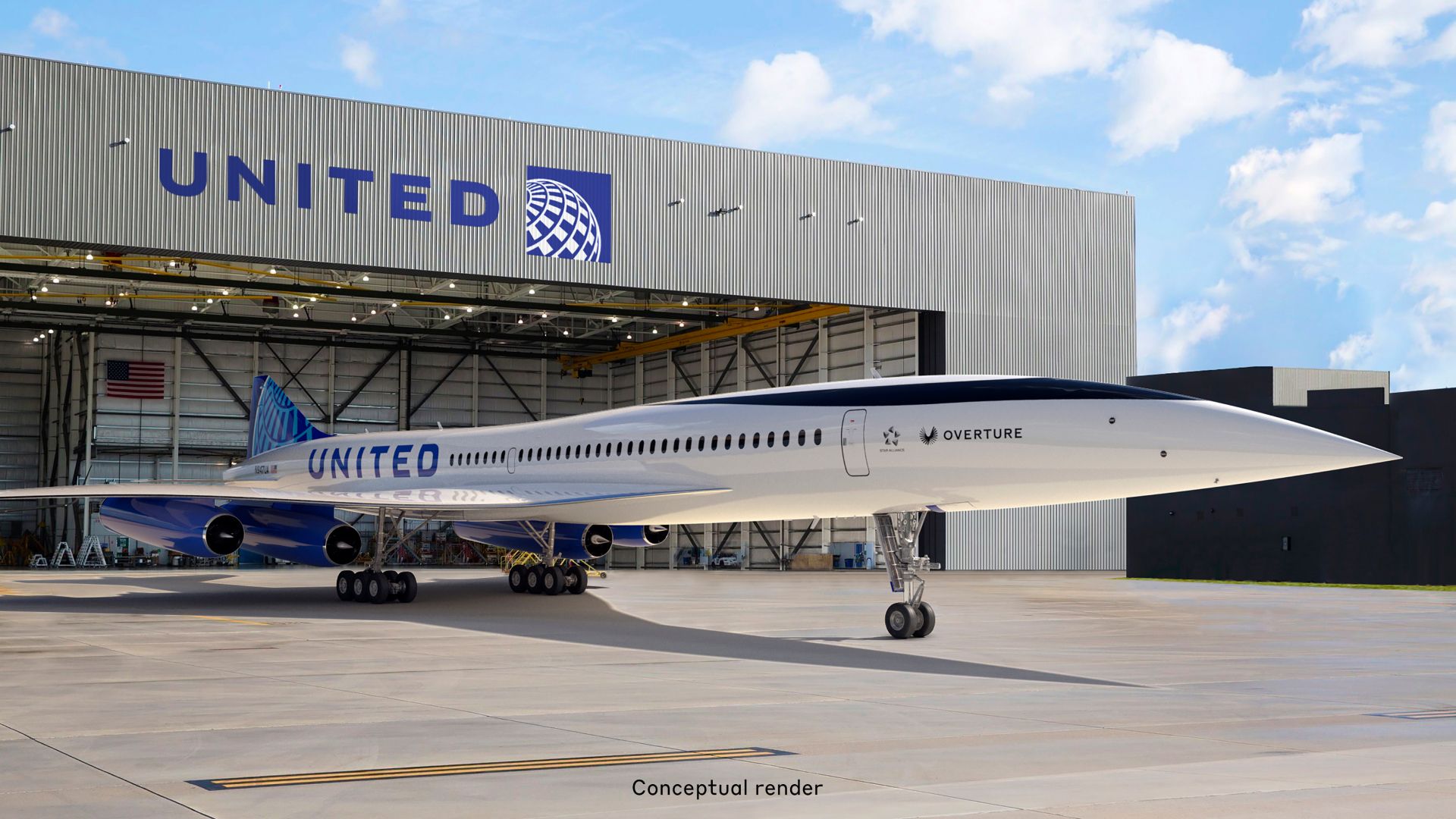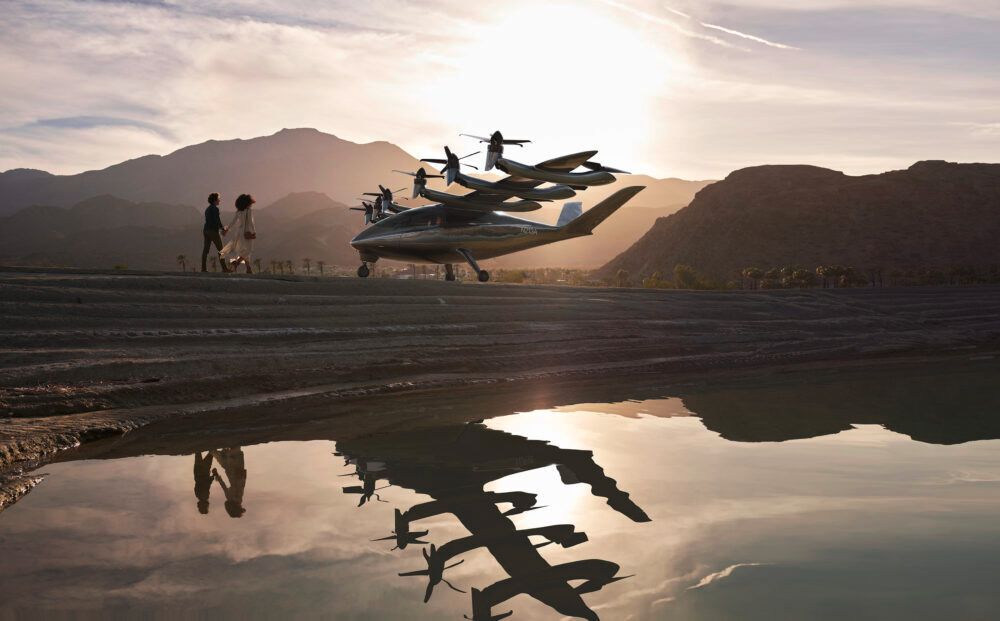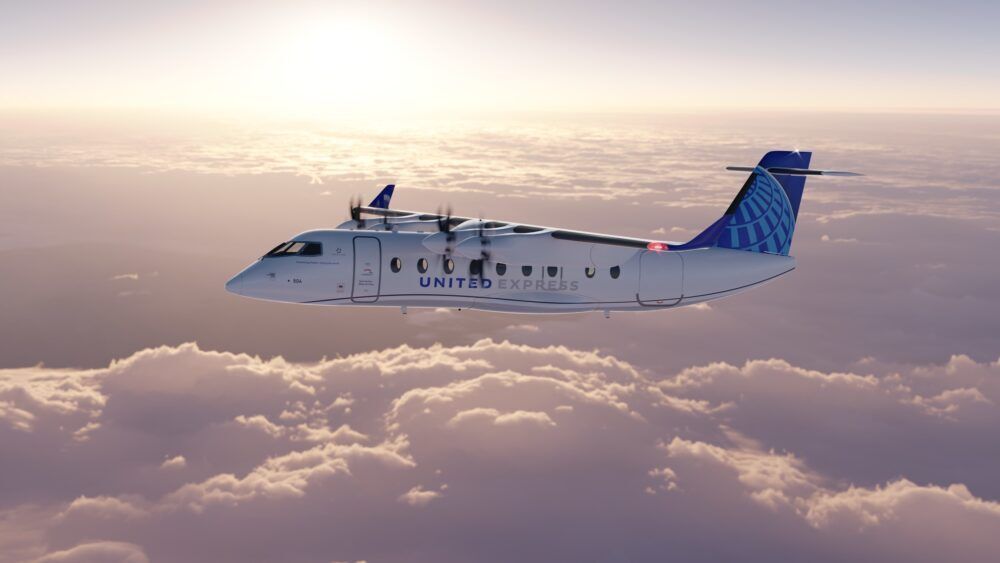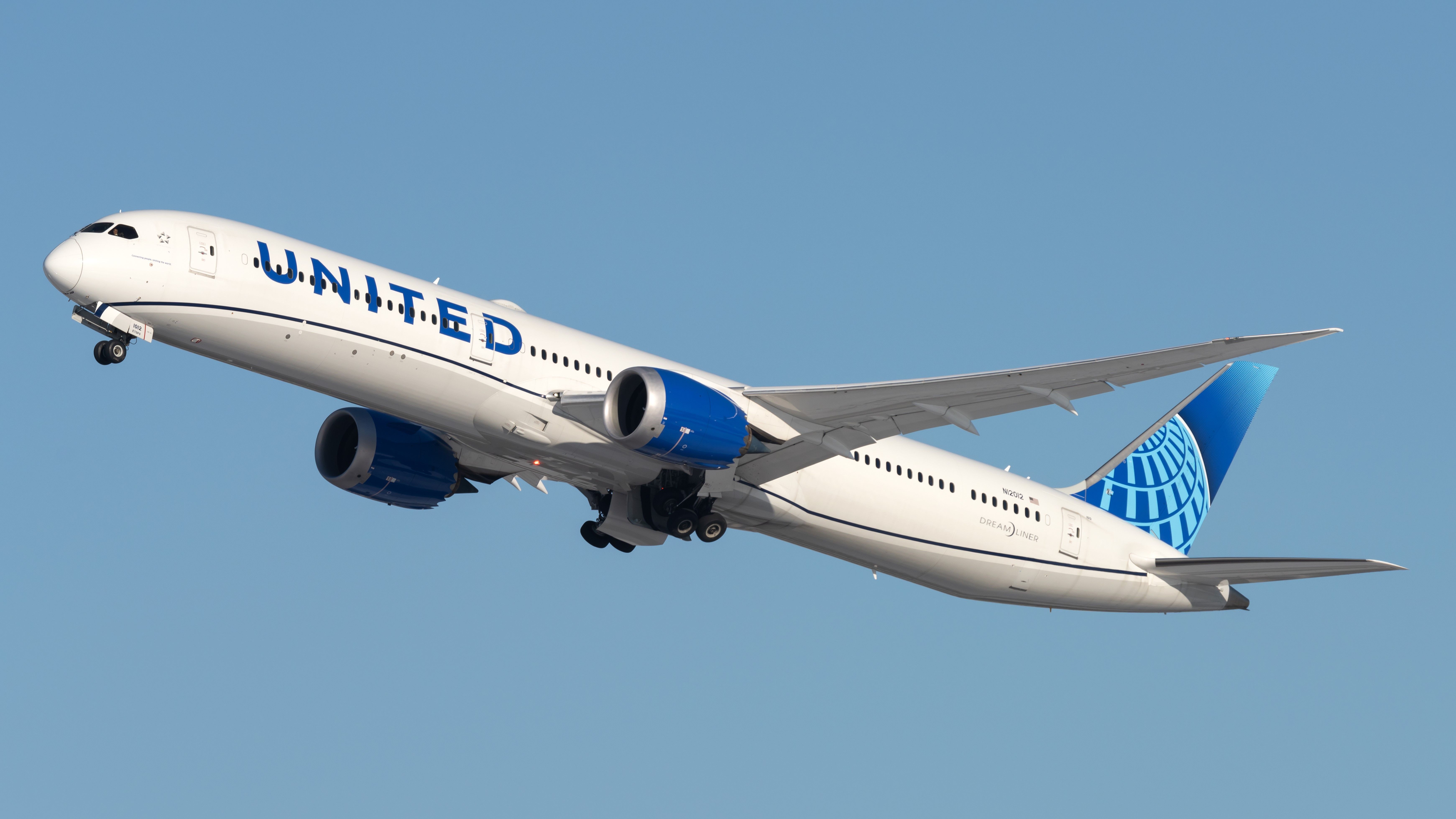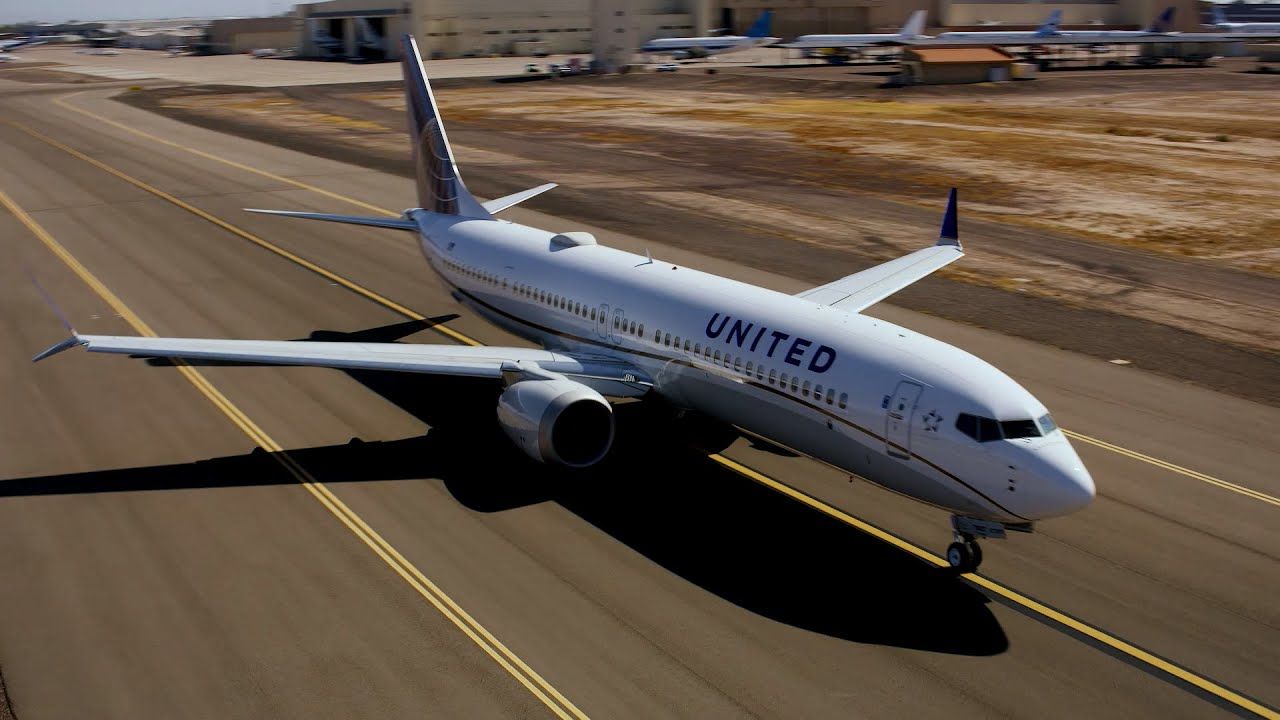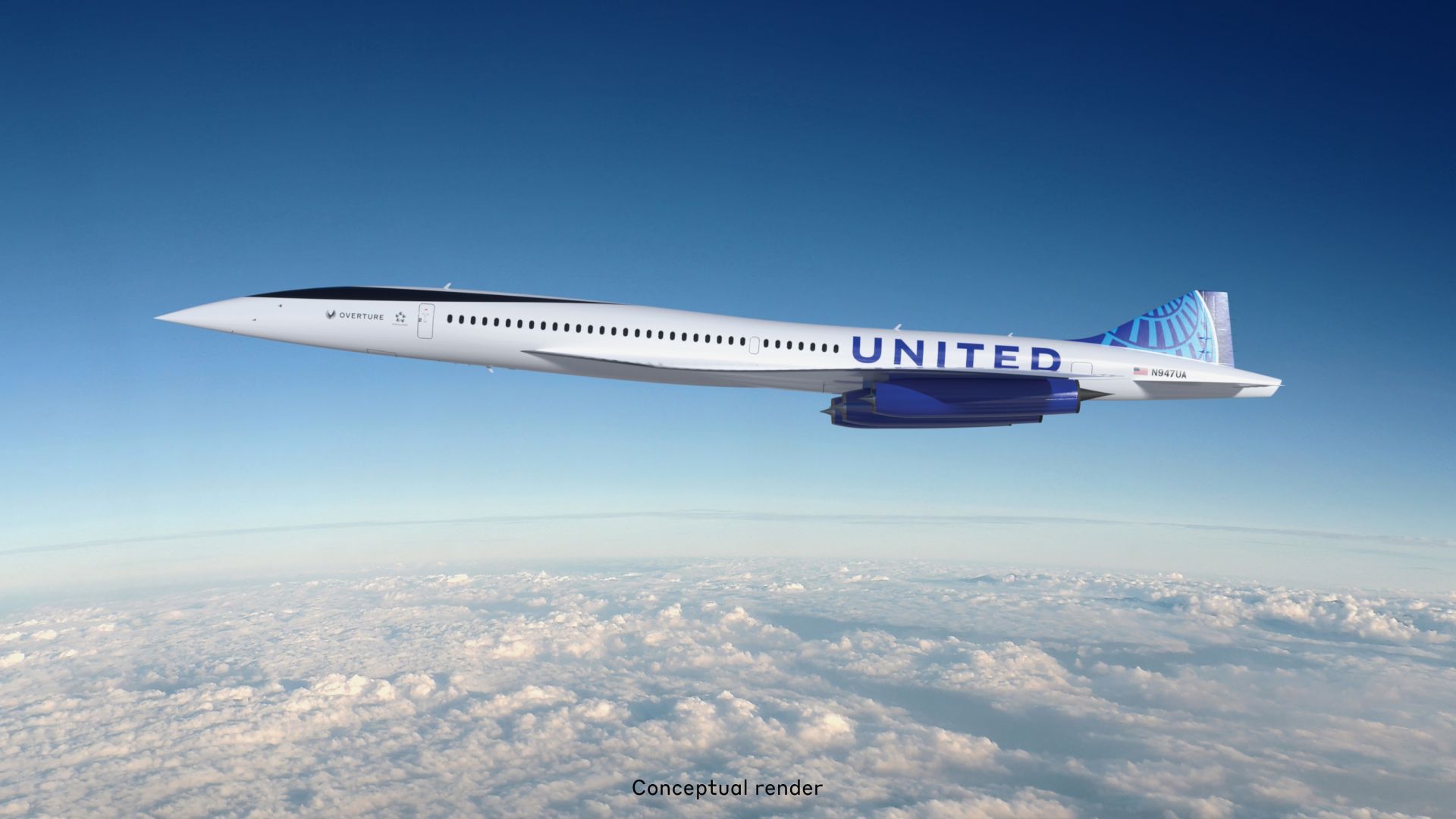Summary
- United Airlines invests in supersonic planes and plans to carry passengers in 2029.
- United is partnering with startups for eVTOLs and hydrogen-fueled planes to enhance regional travel.
- United aims to revamp its fleet with new aircraft like electric jets and 787s while reducing emissions by 2050.
United Airlines has performed significantly well in recovering from the pandemic-related disruptions. Not only did the airline shuffle its fleet and operations during that period, but it also provided a future outlook for its fleet in the coming years and for the next decade. If all goes according to the plan, the airline will have the most interesting fleet in the 2030s. Here’s what the carrier’s fleet could look like in ten years.
United Airlines’ current fleet
United Airlines operates a comprehensive Airbus and Boeing aircraft fleet on its mainline (excluding United Express). The airline has a diverse fleet of nearly 1,000 modern narrowbody and widebody airliners. According to the data from Planespotters.net, the current fleet is split into the following: Some aircraft may be parked due to maintenance or other issues.
|
Aircraft |
Number of planes |
Average age |
|---|---|---|
|
Airbus A319-100 |
81 |
22.6 years |
|
Airbus A320-200 |
87 |
25.3 years |
|
Airbus A321neo |
9 |
0.4 years |
|
Boeing 737-700 |
40 |
25.2 years |
|
Boeing 737-800 |
141 |
20.3 years |
|
Boeing 737-900 |
12 |
22.7 years |
|
Boeing 737 900ER |
136 |
11.5 years |
|
Boeing 737 MAX 8 |
87 |
2.2 years |
|
Boeing 737 MAX 9 |
79 |
2.8 years |
|
Boeing 757-200 |
40 |
27.4 years |
|
Boeing 757-300 |
21 |
21.8 years |
|
Boeing 767-300 |
37 |
28.3 years |
|
Boeing 767-400 |
16 |
22.7 years |
|
Boeing 777-200 |
74 |
25.0 years |
|
Boeing 777-300ER |
22 |
6.5 years |
|
Boeing 787-8 Dreamliner |
12 |
10.9 years |
|
Boeing 787-9 Dreamliner |
38 |
6.7 years |
|
Boeing 787-10 Dreamliner |
21 |
4.0 years |
|
Total |
953 |
16.3 years |

Related
How United Airlines Transformed A Loyalty Program Into A Multibillion-Dollar Financial Asset
Such moves have fundamentally changed the way airlines operate.
The return of supersonic
- Capacity: 64 to 80 passengers
- Length: 201 ft (61 m)
- Wingspan: 60 ft (18 m)
- Maximum takeoff weight: 170,000 lb (77,111 kg)
- Powerplant: 4x Boom Symphony medium-bypass turbofans
- Thrust per engine: 35,000 lbf (160 kN) thrust each
- Maximum speed: Mach 1.7 (975 knots, 1,122 mph, 1,805 km/h)
- Range: 4,250 nmi (4,890 mi, 7,870 km)
- Balanced field length: 10,000 ft (3,048 m)
United Airlines has ordered 15 Boom Overture airliners, with conditions for the aircraft to meet the carrier’s safety, operating, and sustainability requirements. In addition, United has options to take 35 more aircraft. According to Scott Kirby, the Chief Executive Officer of United Airlines,
“United continues on its trajectory to build a more innovative, sustainable airline and today’s advancements in technology are making it more viable for that to include supersonic planes. Boom’s vision for the future of commercial aviation, combined with the industry’s most robust route network in the world, will give business and leisure travelers access to a stellar flight experience. Our mission has always been about connecting people and now working with Boom, we’ll be able to do that on an even greater scale.”
The aircraft is expected to carry passengers starting in 2029 if all goes well. The real question with these jets is where and how United Airlines will fly these aircraft. The Concorde, the last major supersonic airliner, was limited by its range, limitations of operating at supersonic speeds over land due to sonic boom concerns, and limited markets where the aircraft made good business sense.
Photo: Boom Supersonic
The aircraft’s three potential routes are Newark to London, Newark to Frankfurt, and San Francisco to Tokyo. Once the airline figures out how regulatory agencies and consumers will react to the plane, more routes could certainly follow.
Turning to something new: eVTOLs
One of the newer airline industry investments is electric vertical takeoff and landing (eVTOL) aircraft. These small aircraft are designed to use electric motors and function as air taxis in urban markets.
United Airlines has invested in Archer, an air mobility company, to operate up to 200 of Archer’s eVTOLs in partnership with Mesa Airlines. The eVTOLs are expected to travel up to 60 miles at speeds of up to 150 miles per hour.
These planes are designed to connect local points at United’s hubs to the airport. For example, the airline could market an air taxi option from Hollywood to Los Angeles International Airport (LAX) and help passengers avoid traffic by cars. Other options could be connecting Washington-Dulles (IAD) with points closer to the National Mall in Washington D.C. or connecting Newark Liberty International Airport (EWR) with points in Manhattan, Queens, or Brooklyn, making the journey to Newark a little easier.
Photo: Archer
Last year, United Airlines and Archer announced that Chicago’s O’Hare International Airport (ORD) would begin the next point-to-point route. The two companies plan to utilize Archer’s eVTOLs as part of their urban air mobility (UAM) network buildout.
- O’Hare Airport is United’s largest operations hub
- Point to point route to most nearby cities
- A major transportation center and leader in mobility innovation
- Partners include the City of Chicago, Chicago Department of Aviation, World Business Chicago, the State of Illinois, ComEd, and Vertiport Chicago
United has also invested $15 million in Eve Air Mobility and entered into a conditional purchase agreement for 200 four-seat electric aircraft, with deliveries beginning in 2026. The airline also announced options for another 200 aircraft to foster its UAM program.
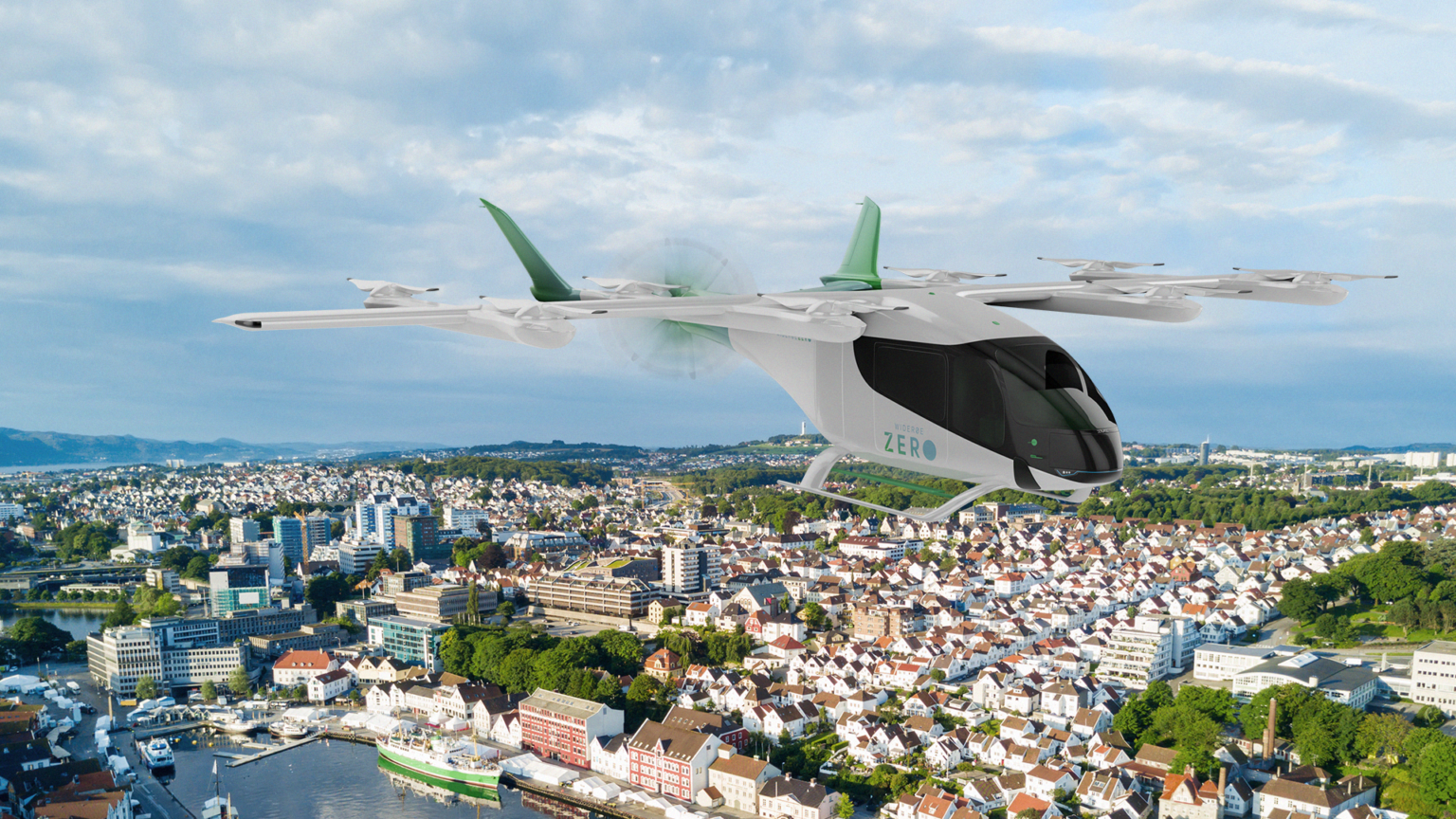
Related
Johann Bordais To Transition To CEO Of Eve Air Mobility
Bordais will take over beginning September 1, 2023.
There are still many unanswered questions surrounding eVTOLs. Archer targets consumer flights from 2025, though it must get regulatory approval. After that, the question will be how these aircraft can operate in some congested airspace and what kinds of locations within cities these aircraft will be able to land and take off from.
eVTOLs are getting a lot of attention from airlines worldwide. However, the entry into service could perhaps be a little optimistic. Nevertheless, this could be an exciting development.
Electric short-haul regional jets
United Airlines has signed an agreement with Breakthrough Energy Ventures (BEV) and Mesa Airlines for investment in startup Heart Aerospace. Heart Aerospace is developing a 19-seat electric aircraft that can fly customers up to 250 miles.
United has placed a conditional order for 100 ES-19 once the aircraft meets United’s safety, business, and operating requirements. Mesa has also agreed to add 100 ES-19s to its fleet, subject to similar requirements.
Photo: United Airlines
The ES-19 is designed to utilize electric motors instead of jet engines. These aircraft will mimic some of the turboprop aircraft operations worldwide by running short-haul operations to smaller destinations.
For example, United Airlines has looked at adding regional routes from Chicago O’Hare International Airport (ORD) to Purdue University Airport (LAF) and from San Francisco International Airport (SFO) to Modesto City-County Airport (MOD).
Like eVTOLs, the ES-19 has plenty of unanswered questions. Questions such as where the planes will be charged, the business case surrounding them, and how airport infrastructure at major hubs will need to adapt to handle these planes have yet to be revealed.
Hydrogen ambition
Notably, at the end of 2021, United Airlines committed to a hydrogen-electric future with an equity stake in ZeroAvia. The company shared that it invested in zero-emission engines for its regional planes. ZeroAvia completed the world’s first hydrogen fuel cell-backed flight of a commercial-grade aircraft in 2022 and continues to shake up the prospects of hydrogen aviation.
United aims to reduce its greenhouse gas emissions “100% by 2050.” Without relying on carbon offsetting schemes, this is a mammoth task. Thus, ZeroAvia’s initiatives will go a long way this decade.
Stay informed: Sign up for our daily and weekly aviation news digests.
The traditional jet aircraft
Much of United’s fleet will be traditional jet aircraft. Three certain types will be flying for United: the Airbus A321neo family, the Boeing 737 MAX, and Boeing 787 Dreamliner.
Photo: Vincenzo Pace | Simple Flying
United will also likely continue to fly its newer Boeing 777-300ERs and a healthy fleet of Boeing 737 Next Generation jets. However, the number of each type remains to be seen.
Almost certain retirements would be the Boeing 757s, which will depart in the middle of this decade, and the Boeing 767s. The Airbus A319s and A320s are getting a little older and may be retired heading into the 2030s.
United Airlines will likely have enough jets to replace the Boeing 757s, thanks to an order book including Airbus A321XLRs, A321neos, and Boeing 737 MAX jets. According to United Airlines,
“We’re making our fleet bigger and your experience better than ever by adding up to 200 widebody planes — the largest order by a U.S. carrier in commercial airline history. We will have more than 800 new planes in our fleet by 2032.”
The real question will be how United will replace the 777-200ERs and the Airbus A320 family of aircraft. Certainly, more orders for the A321neo or 737 MAX could expand the narrowbody fleet. In October 2023, the airline announced orders for 110 aircraft for delivery beginning in 2028.
The airline converted previous options and purchase rights into firm orders for 50 Boeing 787-9s for delivery between 2028 and 2031 and 60 Airbus A321neos for delivery between 2028 and 2030. At the end of the decade, United also secured new options for up to 50 more Boeing 787s and purchase rights for an additional 40 A321neo aircraft.
Do not forget that United Airlines also awaits an order for 45 Airbus A350-900s. The airline, which previously had very strong ties with Boeing and operated a predominantly Boeing fleet, has not been shy about taking on Airbus jets, including older A319s or A320s.
Photo: United Airlines
The A350-900s could help replace the Boeing 777s. Still, United will likely also be turning to more 787s to replace the Boeing 767s, which are also expected to be retired in this decade, favoring newer, more fuel-efficient aircraft. United is keenly focused on reaching net-zero emissions by 2050, and taking on greener aircraft will be a big part of that commitment. The A350s were initially scheduled to be delivered in 2027. However, several deferrals by the airline have delayed them until 2030.
Then again, Boeing will also likely offer some new types in the market. This could include the hotly anticipated aircraft that could be a successor to the Boeing 757. Details on that jet are a little scarce for now, but United would be a key player in any decisions on that new plane.
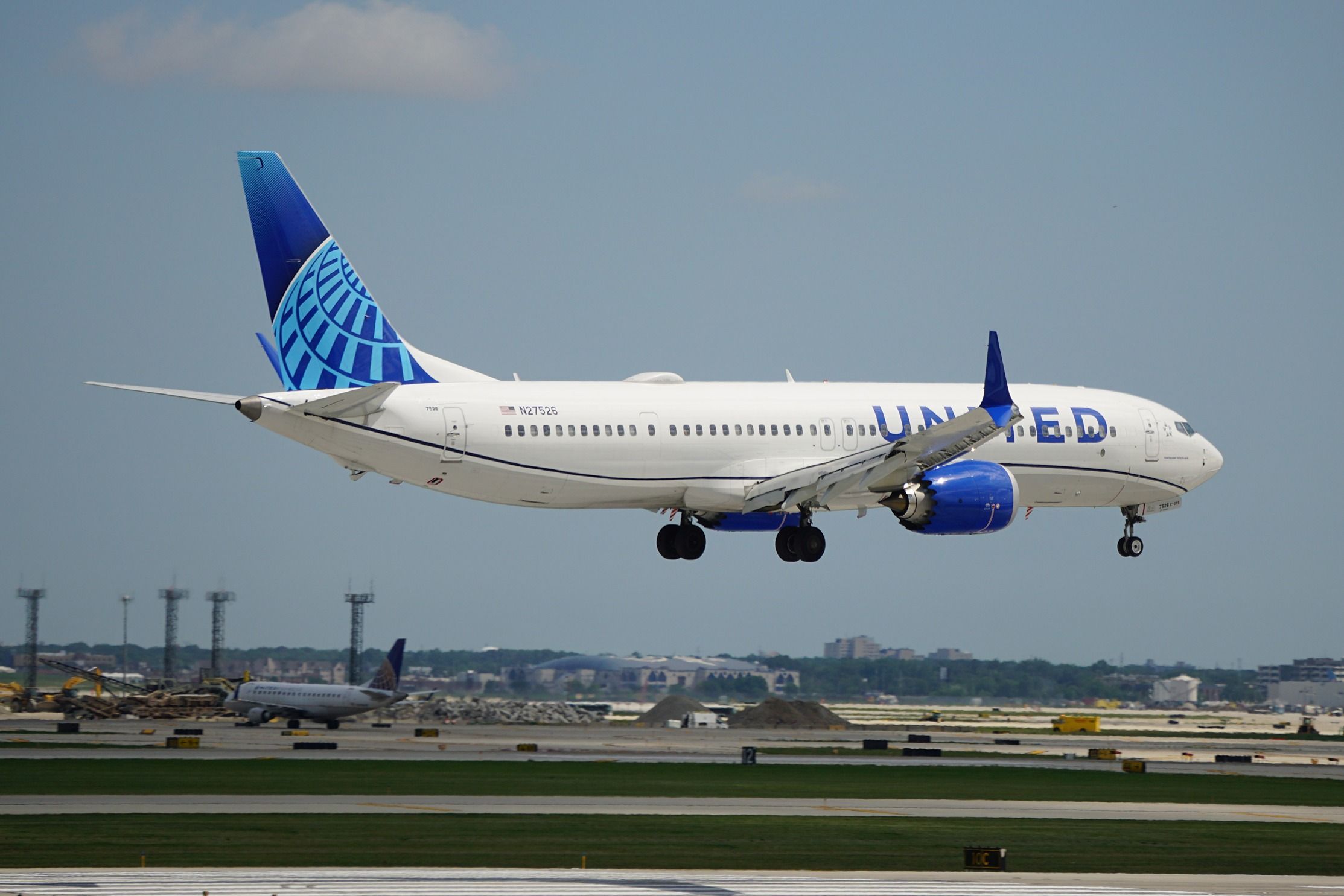
Related
United Airlines Defers Boeing 737 MAX 9 Deliveries During FAA Safety Review
In addition to delivery delays, the safety review of United Airlines is further impacting its capacity growth plans during 2024.
United is gearing up to have a very interesting fleet in ten years. Some newer technologies, like eVTOLs, electric regional aircraft, or supersonic jets, may still be under development in 2030 and beyond. Nevertheless, United is certainly showing that it is willing to try something new, which could pay off really well for the carrier.
Photo: Boom Supersonic
What do you think United’s fleet will look like in ten years? Which of these types are you most interested in flying on? Let us know what you think in the comment section.

